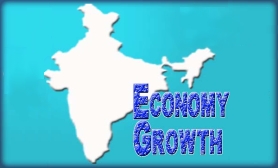|

|
'Fiscal deficit to be reduced to 3 pc by 2019'
|
|

|
|
| Top Stories |
 |
|
|
|
SME Times News Bureau | 26 Apr, 2017
The NITI Aayog on Tuesday said it has proposed to reduce the fiscal deficit be brought down to three percent of the GDP by 2018-19.
It has also set the target for the revenue deficit to be reduced to 0.9 percent of the Gross Domestic Product (GDP) by 2019-20.
The target has been set under the draft three-year action agenda which was discussed during the third Governing Council meeting of the NITI (National Institution for Transforming India) Aayog on Sunday.
Sharing the details of the plan with the media on Tuesday, NITI Vice Chairman Arvind Panagariya said the roadmap to achieve this target would include shifting additional revenue towards high priority sectors like health, education, agriculture, rural development, defence, railways, roads and other categories of capital expenditure.
The central government pegged the fiscal deficit for 2017-18 at 3.2 percent of GDP and revenue deficit at 1.9 percent for the same fiscal.
Panagariya said the three-year action agenda would be based on a 15-year long-term vision and a seven-year strategy to achieve that vision.
"With an increasingly open and liberalised economy and given the new realities of the global economy, we needed to rethink the tools and approaches to conceptualizing the development process.
"The vision, strategy and action agenda framework would allow us to better align the development strategy with the changed reality of India," he added.
While formulation of the vision document and the seven-year strategy is in progress, Panagariya said the three-year agenda would be finalised after views of the states, Chief Ministers and other stakeholders are incorporated.
Among its various priorities is doubling the income of the farmers by 2022 for which many action points are included in the agenda including shift to high value commodities like horticulture, animal husbandry and fisheries, said NITI member Ramesh Chand.
He added productivity would be increased through enhanced irrigation, faster seed replacement and precision agriculture.
The three-year road-map also includes closing select loss-making Public Sector Enterprises and strategic disinvestment of 20 identified Central Public Sector Enterprises, Panagariya said.
"There would be focus on expanding the government's role in public health and quality education."
On taxation front, the agenda document envisages tackling tax evasion, expanding the tax base and simplifying the tax system through reforms.
"For example, there would be efforts to consolidate existing custom duty rates to a unified rate."
The document also stresses adopting of sustainable practices, adopting measures to tackle air pollution and promoting sustainable use of water resources.
NITI member Bibek Debroy said the new planning framework breaks away from the five-year planning cycle and looks forward 15 years down the line.
"To get to where we want to be, there is a need for decentralized planning moving upward from below," he said.
Chand added the draft plan draws from the need to be inclusive while talking about growth and development.
It tries to accelerate growth while also ensuring that the benefits of that growth reach everyone, he said.
Chand said another aspect of this plan was to "represent continuity with change" by encorporating good programmes of the Five Year Plans while also bringing in new reforms.
In May 2016, the Prime Minister's Office advised the NITI Aayog, its independent think tank, to prepare a 15-year vision, seven-year strategy and three-year action agenda to replace the Five Year Plans.
The 12th Five Year Plan ended on March 31.
|
|
|
| |
|
|
|
|
|
|
|
|
|
|
|
|
|
|
| |
| Customs Exchange Rates |
| Currency |
Import |
Export |
US Dollar
|
₹88.70
|
₹87 |
UK Pound
|
₹119.90
|
₹116 |
Euro
|
₹104.25
|
₹100.65 |
| Japanese
Yen |
₹59.20 |
₹57.30 |
| As on 30 Oct, 2025 |
|
|
| Daily Poll |
 |
 |
| Who do you think will benefit more from the India - UK FTA in the long run?
|
|
|
|
|
|
| Commented Stories |
 |
|
|
|
|
|
| |
|